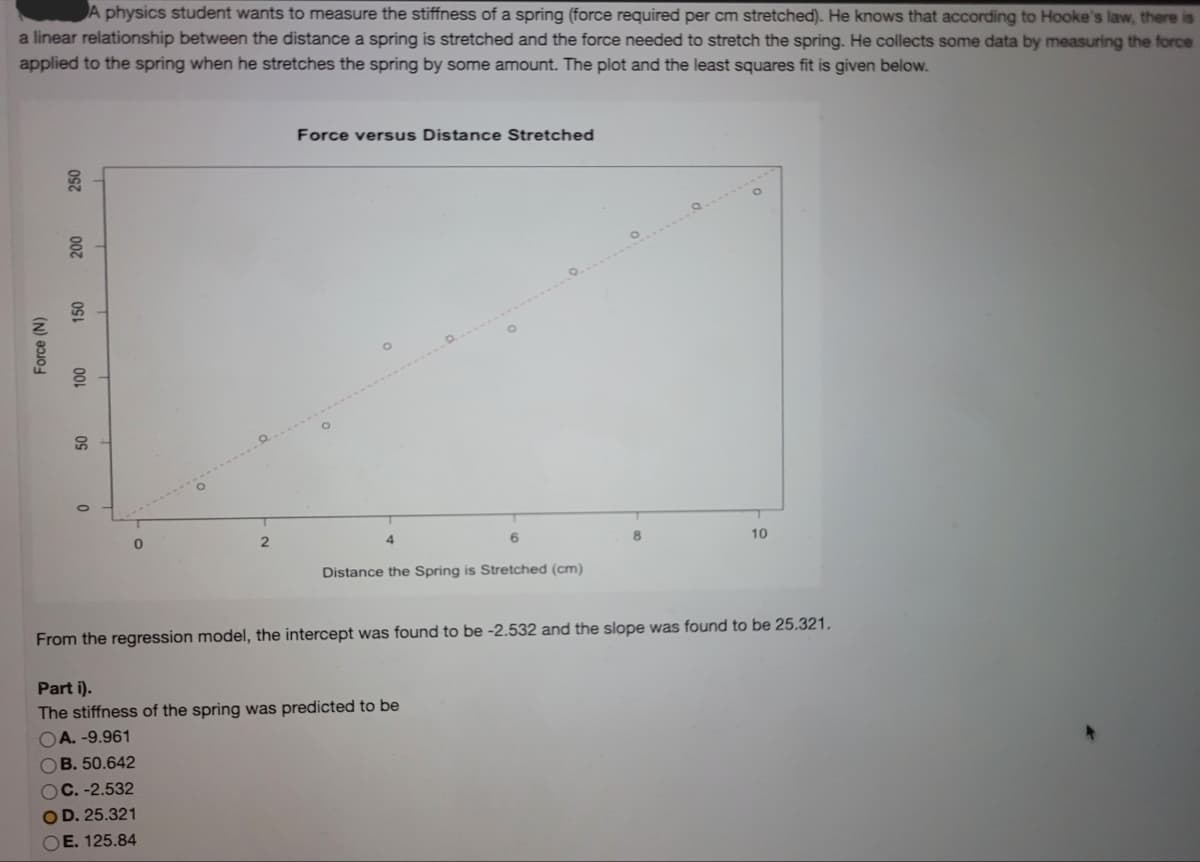wants to measure the stiffne öf å spring (force required etween the distance a spring is stretched and the force needed when he stretches the spring by some amount. The plot and the
wants to measure the stiffne öf å spring (force required etween the distance a spring is stretched and the force needed when he stretches the spring by some amount. The plot and the
Chapter3: Polynomial Functions
Section: Chapter Questions
Problem 18T
Related questions
Question
Need assistance with this.

Transcribed Image Text:A physics student wants to measure the stiffness of a spring (force required per cm stretched). He knows that according to Hooke's law, there is
a linear relationship between the distance a spring is stretched and the force needed to stretch the spring. He collects some data by measuring the force
applied to the spring when he stretches the spring by some amount. The plot and the least squares fit is given below.
Force versus Distance Stretched
50
4
6.
10
Distance the Spring is Stretched (cm)
From the regression model, the intercept was found to be -2.532 and the slope was found to be 25.321.
Part i).
The stiffness of the spring was predicted to be
OA. -9.961
OB. 50.642
OC. -2.532
OD. 25.321
OE. 125.84
00.
00L
Force (N)

Transcribed Image Text:Part i).
Refer to the previous question, the physics student used the regression model to predict that a force of 377.28N would be required to stretch the spring
by 15cm. Remarkably, his prediction was horribly wrong. Can you explain why? (Check all that apply)
A. He made a prediction outside of the range of stretched distances measured.
VB. He made a prediction outside of the range of forces observed.
nC. He had outliers or influential points in his data.
V D. Correlation does not imply causation.
OE. None of the above
Expert Solution
This question has been solved!
Explore an expertly crafted, step-by-step solution for a thorough understanding of key concepts.
This is a popular solution!
Trending now
This is a popular solution!
Step by step
Solved in 2 steps with 1 images

Recommended textbooks for you


Algebra & Trigonometry with Analytic Geometry
Algebra
ISBN:
9781133382119
Author:
Swokowski
Publisher:
Cengage

Linear Algebra: A Modern Introduction
Algebra
ISBN:
9781285463247
Author:
David Poole
Publisher:
Cengage Learning


Algebra & Trigonometry with Analytic Geometry
Algebra
ISBN:
9781133382119
Author:
Swokowski
Publisher:
Cengage

Linear Algebra: A Modern Introduction
Algebra
ISBN:
9781285463247
Author:
David Poole
Publisher:
Cengage Learning